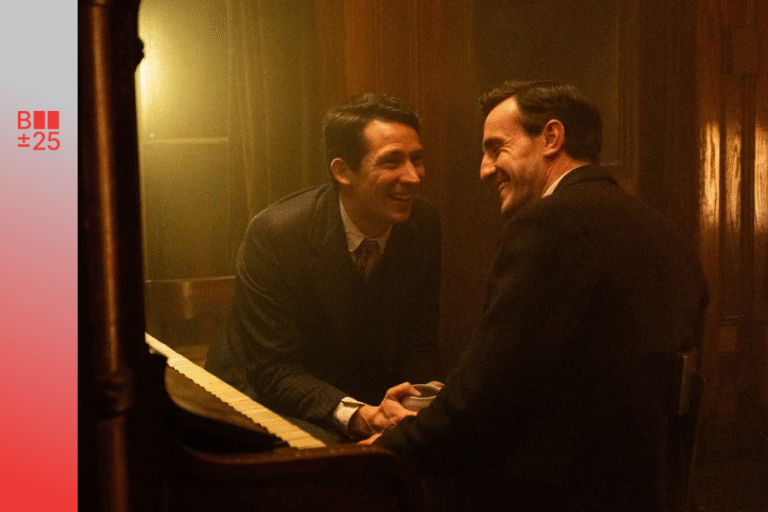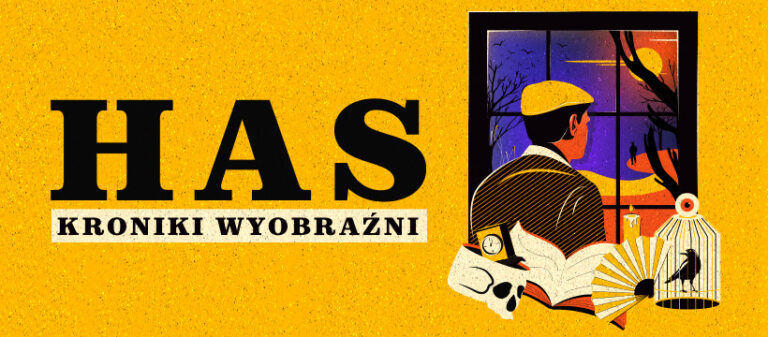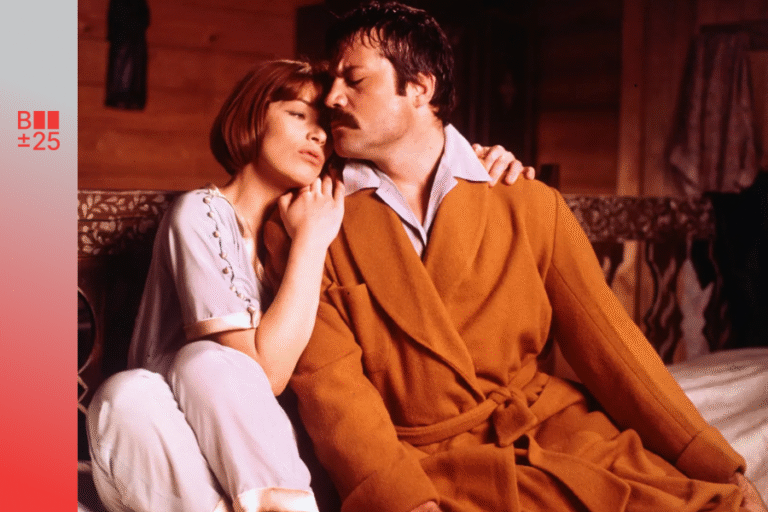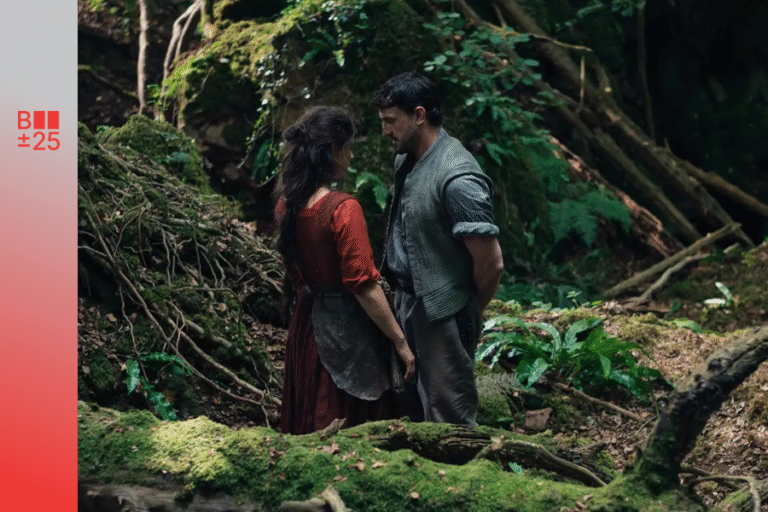
Urodzony w RPA reżyser Oliver Hermanus, zabiera nas w podróż w czasie do okresu I wojny światowej. Razem ze swoimi bohaterami, dwoma młodymi mężczyznami (granymi przez zjawiskowy duet, którego nikomu nie trzeba przedstawiać – Brytyjczyka Josha O’Connora i Irlandczyka Paula Mescala), podejmuje się próby opowiedzenia o miłości w czasach, w których łatwo jest zatracić wiarę w człowieczeństwo. Nośnikiem emocji jest tu dźwięk i muzyka. To poprzez nagrania, w tym także utrwalenie lokalnych folkowych piosenek, ochraniają przed zapomnieniem i dokumentują czas, który nigdy już nie powróci. To także romans między dwoma chłopakami z początku XX wieku, kiedy o miłości nie mówiło się wprost, a poprzez niuanse, pełne wrażliwości spojrzenia oraz gesty. Bohaterowie poznają się w piano barze, kiedy obaj są studentami Konserwatorium Muzycznego w Nowej Anglii. David siedzi przy fortepianie i śpiewa amerykańską piosenkę ludową, co przyciąga uwagę Lionela. Dorastał śpiewając takie piosenki, a nauczył go ich ojciec, który był skrzypkiem. Jak dowiadujemy się na samym początku filmu muzyka płynie w jego krwi, a nuty dosłownie sprawiają, że widzi konkretne kolory. Bardzo szybko okazuje się, że David i Lionel to tak naprawdę bratnie dusze, które odnalazły siebie na tym świecie. Sfilmowany przez Alexandra Dynana THE HISTORY OF SOUND sprawie wrażenie najprzystojniejszego filmu tego sezonu, w którym dominują naturalne kolory ziemi i ciemne ubrania, wzbudzające w widzu poczucie wyjątkowego nastroju, romansowania z przeszłością, a nawet swoistej medytacji, którą dopełnia dźwięk. Film prezentowany był w Konkursie Głównym w Cannes 2025, a także w oficjalnej selekcji BFI London Film Festival. Pokazy w ramach British Film Festival to jedne z pierwszych, przedpremierowych seansów w Polsce.
ENG
South African-born director Oliver Hermanus takes us on a journey back in time to the period of the First World War. Together with his protagonists, two young men played by the mesmerising duo Josh O’Connor and Paul Mescal, names that need no introduction, he embarks on a delicate exploration of love in an age when faith in humanity itself seemed to falter.
Here, sound and music become the true vessels of emotion. Through field recordings and the preservation of local folk songs, the characters not only protect memories from fading but also document a fleeting world that will never return. At its heart, THE HISTORY OF SOUND is a love story between two men at the dawn of the twentieth century, a time when love could not be spoken of directly, only hinted at through glances, gestures, and a shared sensitivity.
The two meet in a piano bar while both are students at the New England Conservatory of Music. David sits at the piano, singing an American folk tune that instantly captures Lionel’s attention. He grew up singing such songs, taught by his father, who was a violinist. As we learn at the very beginning of the film, music runs in Lionel’s veins, and the notes literally make him see specific colours. It soon becomes clear that David and Lionel are kindred spirits who have, by chance or fate, found each other in this world.
Shot by cinematographer Alexander Dynan, THE HISTORY OF SOUND may well be the most ravishing film of the season - dominated by natural earth tones and sombre costumes that conjure a mood of intimacy, nostalgia and quiet meditation, deepened by the immersive presence of sound.
Presented in Competition at the 2025 Cannes Film Festival and later included in the official selection of the BFI London Film Festival, the screenings at the British Film Festival mark some of the first pre-premiere showings in Poland.
Film nie należy do wiernych adaptacji jednej z najznakomitszych powieści polskiej literatury, lecz stanowi swobodną kreację w oparciu o jej wątki. Reżyser uwypuklił osobisty dramat Wokulskiego, wpisany w obyczajową mozaikę Warszawy końca XIX wieku. Cechą postaci Wokulskiego jest wewnętrzne rozdarcie spowodowane nieodwzajemnioną miłością do Izabeli Łęckiej, nieszczęściem zaś – jego nazbyt romantyczna postawa i nieporadność samotnika zagubionego w snobistycznym, groteskowym społeczeństwie, którego życie Has maluje w iście turpistycznych obrazach.
H. Lawrence to jeden z najbardziej prowokacyjnych pisarzy XX-wiecznej literatury angielskiej, więc połączenie jego twórczości z bezkompromisowym stylem filmowym Kena Russella zaowocowało dziełem odważnym i przekraczającym granice. Szczególnie kontrowersyjna okazała się scena nagiej bójki między dwoma głównymi bohaterami. Choć Russell dołączył do projektu dość późno, był to jego pierwszy prawdziwie osobisty film, wnosząc do opowieści o dwóch siostrach i ich miłosnych uwikłaniach, kończących się tragedią, swoją charakterystyczną wizję
Glenda Jackson, nagrodzona za swoją kreację Oskarem, zachwyca jako kąśliwa Gudrun, odrzucająca stereotypowe wzorce kobiecości okresu międzywojennego. Jennie Linden wciela się w jej bardziej wrażliwą siostrę Ursulę. Alan Bates i Oliver Reed tworzą kreacje charyzmatycznych towarzyszy kobiet.
Na szczególną uwagę zasługują wyraziste kostiumy z lat 20. Autorstwa Shirley Russell. Jej projekty nadają strojom charakterystycznym dla epoki nowoczesny rys, pięknie kontrastując z architekturą górniczego miasteczka Midlands, gdzie rozgrywa się akcja. To właśnie zestawienie detali epoki i malowniczej scenerii tworzy urzekające tło dla intelektualnych sporów bohaterów. Film sugestywnie oddaje rozedrganą atmosferę okresu tuż po I wojnie światowej, kiedy kwestie klasowe i moralne wysunęły się na pierwszy plan, a brytyjskie społeczeństwo zaczynało się zmieniać.
ENG
H. Lawrence is one of English literature’s most provocative authors of the 20th century so, the combination of his writing and the maverick filmmaking of Ken Russell, this screen adaptation is inevitably a striking and boundary-breaking feature. The nude wrestling scene between the two male leads was particularly controversial.
Though Russell joined the project quite late, this was his first truly personal cinematic work and he brings his unique vision to the powerful tale of two sisters and their romantic entanglements that end in tragedy. Glenda Jackson won an Oscar for her performance as the acerbic Gudrun, who refuses to conform to the feminine stereotypes of the interwar years. Jennie Linden plays her more tender sister Ursula, while Alan Bates and Oliver Reed portray their charismatic male companions.
One of the film’s most striking aspects is the 1920s costumes by the director’s wife Shirley Russell; her incredible designs give the authentic period look a uniquely contemporary twist and stand out against the architecture of the Midlands mining town where the film is set.
This combination of period detail and beautiful scenery provides an attractive backdrop to the intellectual sparring of the characters. The film effectively evokes the febrile mood after the First World War, a time when issues of class and morality came to the fore and British society began to change.
Maggie O’Farrell w swojej powieści opisuje chłopca, który „ma skłonności do wyślizgiwania się poza granice realnego, namacalnego świata, który go otacza.” Nagrodzony w 2020 roku prestiżową brytyjską nagrodą Women’s Prize for Fiction tekst, został zainspirowany najsłynniejszą, a jednocześnie najbardziej enigmatyczną sztuką Williama Sheakspira. W latach 80. XVI wieku pewnemu małżeństwu mieszkającemu w Stratfordzie urodziła się trójka dzieci: najmłodsza Susanna, a następnie bliźnięta – Hamnet i Judith. Chłopiec zmarł w wieku jedenastu lat. Cztery lata później jego ojciec napisał sztukę zatytułowaną Hamlet. Film wyreżyserowany przez Chloé Zhao, drugą kobietę w historii, która otrzymała Oscara za najlepszą reżyserię (NOMADLAND, 2021), jest wrażliwym i głębokim obrazem małżeństwa, próbującego ukształtować się na nowo po śmierci ukochanego dziecka. To historia Agnes – żony Williama Sheakspeare’a i jej zmagań po stracie ukochanego syna Hamneta. W rolach głównych zjawiskowy duet irlandzkich aktorów: Jessie Buckley oraz Paul Mescal. Producentami filmu są Steven Spielberg i Sam Mendes, a zdjęcia wykonał Łukasz Żal. Dopełnieniem całości jest muzyka skomponowana przez Maxa Richtera. Brytyjski HAMNET to opowieść o poszukiwaniu bliskości i sensu dalszego istnienia, mimo straty, której rany są niemożliwe do zagojenia się. Gdzieś na granicy snu i tego co realne, parafrazując bohaterów filmu, opowiemy Wam historię, ale taką, która Was poruszy. Film prezentowany był w oficjalnej selekcji Toronto International Film Festival oraz BFI London Film Festival. Pierwsze pokazy w Polsce HAMNETA odbywają się na British Film Festival 2025.
ENG
Maggie O’Farrell’s acclaimed novel tells the story of a boy who “tends to slip the bounds of the real, tangible world around him.” Winner of the Women’s Prize for Fiction in 2020, the book was inspired by William Shakespeare’s most famous and most enigmatic play.
In the 1580s, a couple living in Stratford had three children: their eldest, Susanna, followed by twins - Hamnet and Judith. The boy died at the age of eleven. Four years later, his father wrote a play entitled Hamlet. Directed by Chloé Zhao, the second woman in history to win an Oscar for Best Director (NOMADLAND, 2021), HAMNET is a tender, profoundly moving portrait of a marriage trying to rebuild itself in the aftermath of unbearable loss. It is the story of Agnes, William Shakespeare’s wife, and her struggle to find meaning and closeness after the death of her beloved son, Hamnet.
The film stars the mesmerising Irish duo Jessie Buckley and Paul Mescal, with Steven Spielberg and Sam Mendes among the producers. Cinematography is by the Oscar-nominated Łukasz Żal, and the score was composed by Max Richter.
A profoundly British work, HAMNET, is a haunting meditation on love, grief, and the search for meaning after a loss that can never truly heal. Hovering somewhere between dream and reality, it tells - to borrow the film’s own words - a story that will move you deeply. Presented in the Official Selection of both the Toronto International Film Festival and the BFI London Film Festival, HAMNET receives its first Polish screenings at the British Film Festival 2025.



